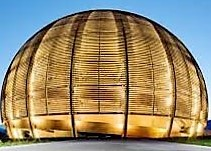Speaker
Description
The $^{17}O(p,\gamma)^{18}F$ reaction plays a crucial role in the hydrogen burning phases of different stellar scenarios. For example, at temperature of interest for AGB nucleosynthesis (20 MK< T < 80 MK) the main contribution to the astrophysical reaction rate come from the poorly constrained ER = 65 keV resonance. The strength of this resonance is presently determined only through indirect measurements, with a reported value of $\omega\gamma$= (1.6 ± 0.3) × 10$^{-11}$ eV [1].
With typical experimental quantities for beam current, isotopic enrichment and detection efficiency, this strength yields an expected count rate of less than 1 $\gamma$-ray per Coulomb, making the direct measurement of this resonance extremely challenging.
A new high sensitivity setup has been installed at LUNA (Laboratory for Underground Nuclear Astrophysics) of Laboratori Nazionali del Gran Sasso [2]. The underground location of LUNA 400kV guarantees a reduction of cosmic ray background by several orders of magnitude and an intense proton beam with high energy resolution and time stability.
The residual background was further reduced by a devoted shielding of lead and borated polyethylene. On the other hand, the 4$\pi$ BGO detector efficiency was optimized installing aluminum target chamber and holder. With more than 300 C accumulated on Ta$_2$O$_5$ targets, with nominal 17O enrichment of 90%, the LUNA collaboration has performed the first direct measurement of the 65 keV resonance strength [3].
In this talk, the setup used of the measurement and preliminary results of the challenging direct measurement performed at LUNA will be illustrated.
